The art world isn’t just full of weird characters. There are all kinds of anecdotes and stories that are unusual, strange and disturbing. Many justify this situation by saying that artists lead an “intense” life where they mix hedonism and violence, self-obsession and creativity, artistic visions and personal traumas. Many times, knowing the background of an artistic work and placing it in context with knowledge about the circumstances of its creation, translates into a greater understanding of meaning.
SEE ALSO: 16 Weird and Funny Medieval Drawings
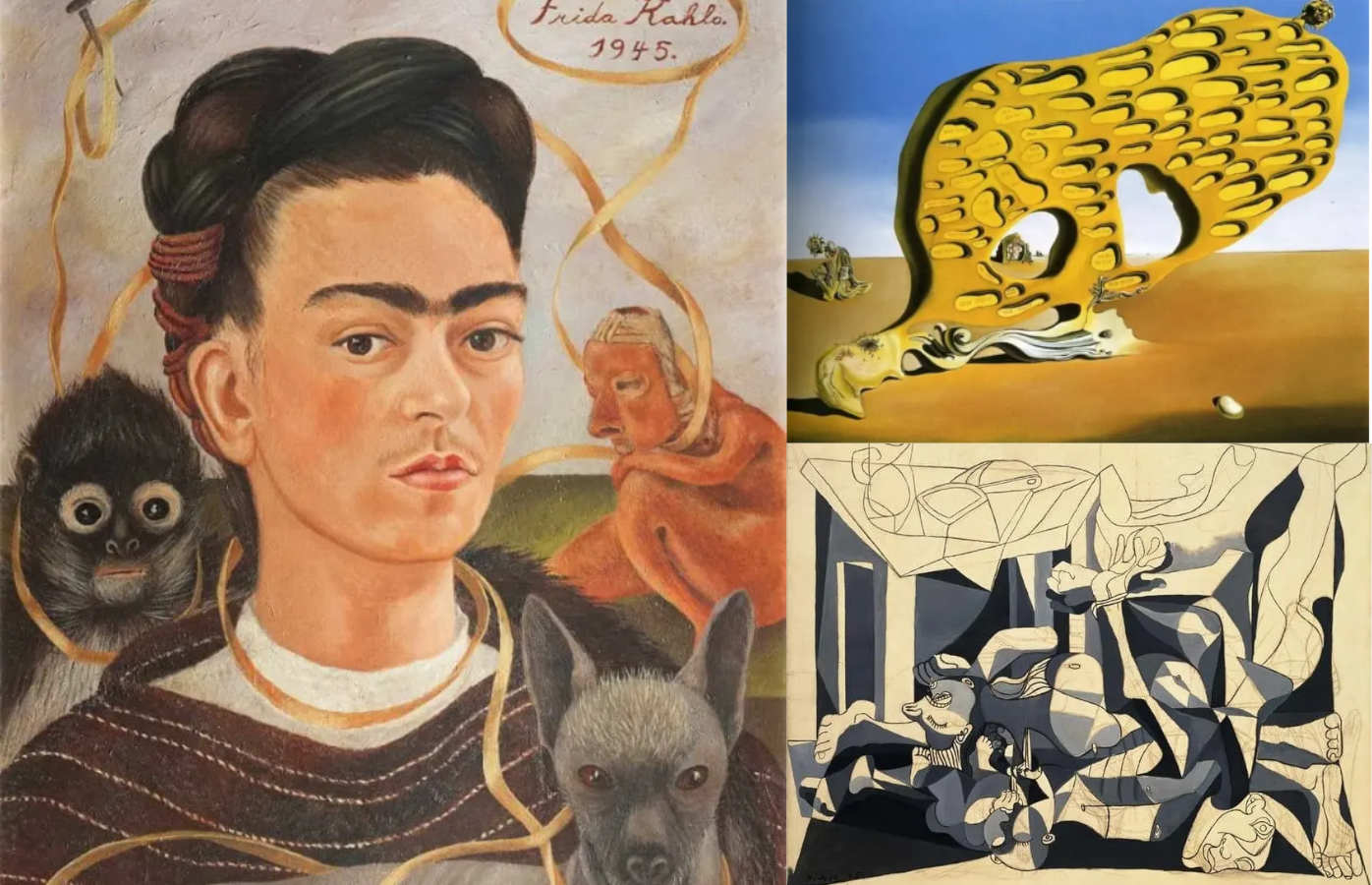
Other times, this biographical information, about the work itself or the artist who made it, is nothing more than an interesting anecdote. That’s why today we present you with great stories related to works that we may know by sight, but not by the events that led to their creation. You’ll never see these pieces the same way again.
Dalí had serious problems with the mother figure.
Salvador Dalí became the centerpiece of the Surrealist movement, a type of art that appeared as a direct consequence of the Freudian thought and psychoanalysis that was so popular in the early 20th century. Surrealist art is ambiguous, and most of the time artists recreate the works from images they get from the subconscious. They often expose their dreams for others to decipher the meaning.
However, Dalí preferred to elaborate a self-analysis of all those symbols that dominated much of his art. This hallmark of his work is evident in the descriptive titles of the works. The Enigma of Desire is a disturbing work by Dalí that serves as an example.

The artist seems to invite the viewer to analyze the “enigma” of the painting. However, at the same time, it offers an answer that ends up completely influencing the analysis. It’s impossible to ignore that this painting is about his mother, and if it’s still unclear, the multiple inscriptions of the phrase “ma mere” on the craters of the central figure leave no room for doubt.
Dalí found it impossible not to think of himself in Freudian terms because of the deeply Oedipal nature of his upbringing. The painter received a devastating blow at the age of 16, when he lost his mother suddenly. This loss shaped his behavior and became particularly complicated in the years that followed. Especially since Dalí had to endure his father remarrying his deceased wife’s sister.
Picasso’s ossuary is a painting full of brutality.
It is no secret that Pablo Picasso’s extensive career was marked by his anti-war paintings. The most famous of all is Guernica, a huge painting from 1937 detailing the bombing of the Spanish town of the same name by fascist troops from Italy and Nazis from Germany. Picasso’s dove of peace is just as iconic, having been used as a symbol of the World Peace Congress in 1949.
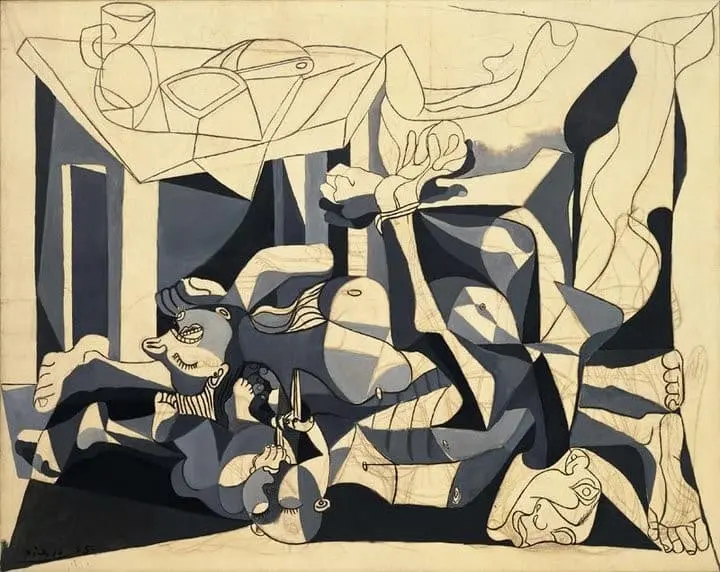
The ossuary, first exhibited in 1946, is another work that captures the artist’s anti-war sentiment. However, at first glance all the brutality contained in the piece is disguised by the style. The Tate Museum details that this painting depicts a Spanish family murdered in the kitchen of their own home, a scene that Picasso observed in a small black-and-white documentary.
Those variations of grey used by Picasso, a technique called grisaille, seek to reproduce the sensation of witnessing such violence in the film. Perhaps, the painter did not intend for his work to be so striking at first glance. As the eyes begin to decipher the image, that feeling of restlessness accumulates in the stomach.
Frida Kahlo’s “monkey” is a symbol of trauma.
It’s okay if you don’t like Frida Kahlo’s work. However, it is impossible to deny that his self-portraits with that particular style of unibrow became an artistic icon. Today, his paintings adorn all kinds of products, from tote bags, to pillows and all kinds of footwear. Although she is considered a symbol of female strength, one of her self-portraits shows her as a weak and vulnerable woman.
Frida Kahlo’s early life was tragic, to say the least. The artist’s biography states that at the age of 6 she contracted polio, a disease that withered her right leg, leaving her with a limp that was pronounced in old age. Much of her childhood was spent alone, isolated from others. Subsequently, when she became a politically active teenager, a horrific bus accident left her with serious injuries. On this occasion, one of the truck’s guardrails ended up piercing his pelvis.
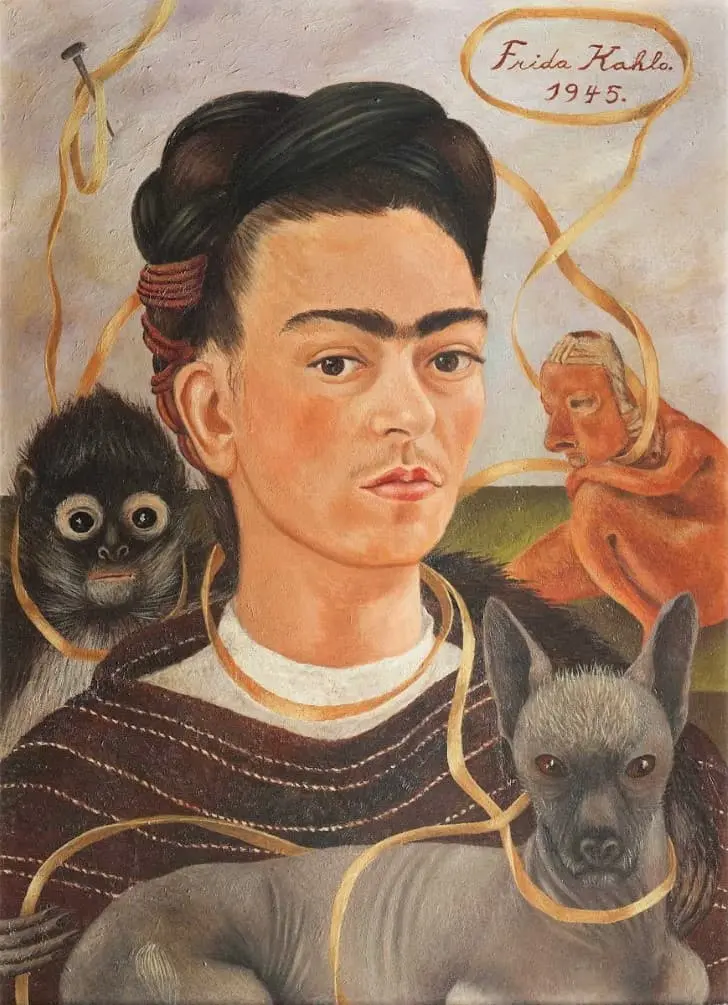
They assume that these traumatic events resulted in Frida Kahlo’s inability to conceive, and many of her self-portraits actually present her as a sick woman, surrounded by symbols of her poor health, and even the abortions she had as a result. Famous pieces, such as Self-Portrait with Monkey, do not openly include these images. However, some experts believe that the images of Frida Kahlo’s favorite animals take on a melancholic purpose in her works, replacing those children she was never able to conceive.
Francis Bacon’s The Black Triptychs are suicide scenes.
Today, Francis Bacon’s work is recognizable by its strange figures, where the blurring of details makes it impossible for the viewer to pinpoint the shape of the object he is observing. The reason for this kind of “censorship” in one of his most famous works, The Black Triptychs, is Bacon’s traumatized reaction to what he sought to represent.
In 1971, Bacon was overseeing the opening of a glamorous exhibition of his work at the Grand Palaism in Paris. George Dyer, his lover of many years, accompanied him on this errand. The couple always had a stormy relationship that ended up being aggravated by the consumption of alcohol and drugs. Two days before the exhibition opened, Dyer was found dead in Bacon’s hotel room. The artist’s lover committed suicide by ingesting an overdose of sleeping pills.
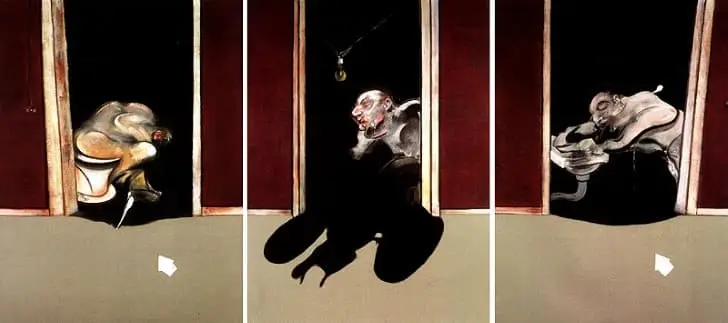
The artist set out to move the exhibition forward, but Dyer’s death did not leave him alone. After the tragic event, Bacon began to paint Dyer with tremendous obsession. That style that the artist had already mastered at the time of Dyer’s suicide found a new purpose: to convey the horror of encountering a death scene and the way in which memory tries to visit (and distort) that scene over and over again.
Andy Warhol hated Campbell’s soup.
Andy Warhol, the revolutionary inventor of pop art, hated the subject matter of his most famous work. Warhol’s reputation was built on Campbell’s soup cans that he exhibited in a series of paintings in 1962 in Los Angeles. Regardless of how you think about these works regarding the artistry or skill of their creator, while the lack of skill in the display is the heart of the matter, the impact they had on the history of twentieth-century art is gigantic.
Various sources suggest that, since Warhol became famous throughout his career painting what he loved (such as dollars and glamorous movie stars), he must have had a special appreciation for this brand of canned soup. The most commonly cited evidence in this regard is that Warhol once claimed to eat this soup every day for 20 years.

However, biographer Tony Scherman claims that the artist hated soup at the time he devised the paintings in the company of his friends. In fact, Warhol’s relatively poor origins led him to consume this same canned soup every day.
Vincent van Gogh was looking to prove his sanity.
After his death, many elements of Vincent van Gogh’s life and work became embedded in popular culture. In fact, some odd aspects of his biography, such as the fact that he had an ear amputated, are perhaps more famous than his paintings of sunflowers. That memorable incident and his work are combined in Self-Portrait with a Bandaged Ear, a work that features Van Gogh in the days following the traumatic event.
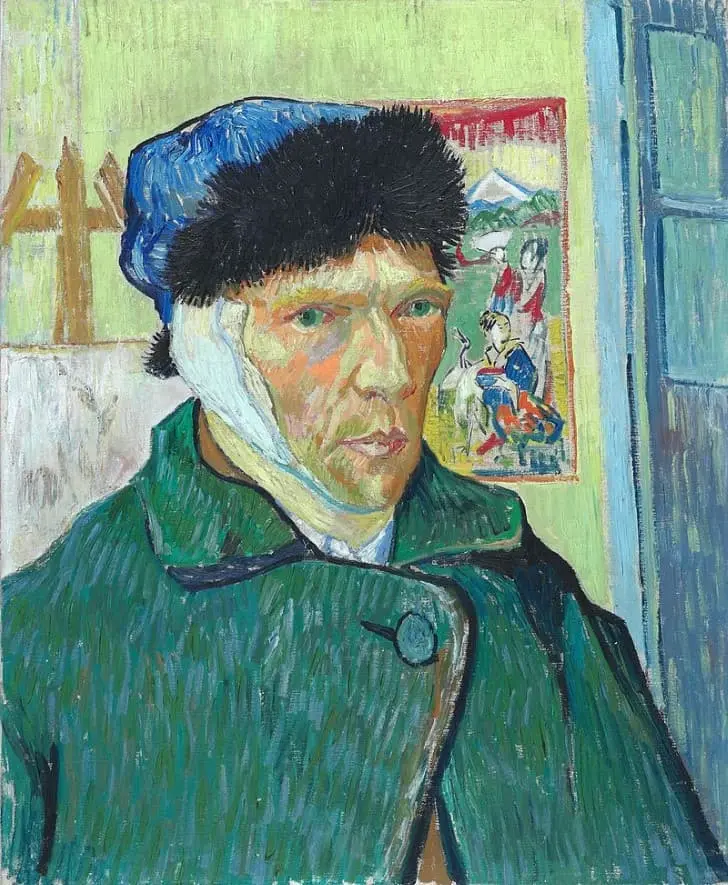
At the time, Van Gogh had been living with his friend and collaborator, the artist Paul Gauguin, for some time, as they planned to open a new studio together. However, the friendship deteriorated due to a mess of skirts. Supposedly, the woman they were fighting for was the same one to whom Van Gogh gave his ear telling her to “protect her with his life.” However, versions of these events vary.
Regardless of the facts, after Van Gogh cut off his ear he had to undergo psychological surveillance. Psychiatrists, concerned for his health, considered sending him to an asylum. For this reason, this self-portrait is an attempt by Van Gogh to show himself as a sane man who, in addition, follows the advice of his doctor by dressing warmly.



Comments